Review and images by JimoAi; edited by bmathison1972
Eagle rays are fascinating creatures. These fish move through the water column by flapping their pectoral fins like wings, similar to the land animal that they are named after. They come in many fascinating forms: from the rounded snouts of cownose (Rhinoptera) and bat rays (Myliobatis) to the plankton-eating manta rays (Mobulidae). However, few are as striking as the spotted eagle rays (Aetobatus). Previously thought to be of a single species, there are now 3 recognizable species: A. narinari, A. laticeps, and A. ocellatus. They are found in the warm waters of the world, with A. narinari being found in the Atlantic, A. ocellatus in the Indo-Pacific, and A. laticeps in the the eastern Pacific. Aetobatus ocellatus seems to be the biggest of the 3, reaching a finspan of 300 cm, and 500 cm long including the long whip-like tail. Both A. laticeps and A. narinari attain a finspan of 230 cm. These fish inhabit warm waters including bays and reefs, and can either be seen alone or in groups. These rays prey on small fish, cephalopods, and gastropods, as well as crustaceans, using their specialized chevron shaped tooth structure to crush the hard shells of animals like crabs and hermit crabs. The rays themselves are preyed upon by larger chondricthyes like the great hammerhead, tiger, bull, and lemon sharks. Like other eagle rays and unlike stingrays, this species possess a vestigial dorsal fin, which is relatively small, and three stingers behind the fin accompanies. These rays are normally passive towards humans, although there was a case of a Floridian women being killed by the impact of a ‘flying’ spotted eagle ray. Aetobatus narinari has been listed as Endangered as of May 2021 and A. ocellatus has been listed as Vulnerable by the IUCN, while A. laticeps is listed as Not Evaluated, likely following the recent decline of sharks and rays. These rays are occasionally hunted for food, which I have disappointedly have seen in markets, and these rays are also unintentionally caught as bycatch, and also for the public aquarium trade. These rays are the most common eagle ray species, along the cownose ray, to be featured in public aquaria, and it’s not hard to see why, especially with their striking blackish to brownish color decorated with various white spots.
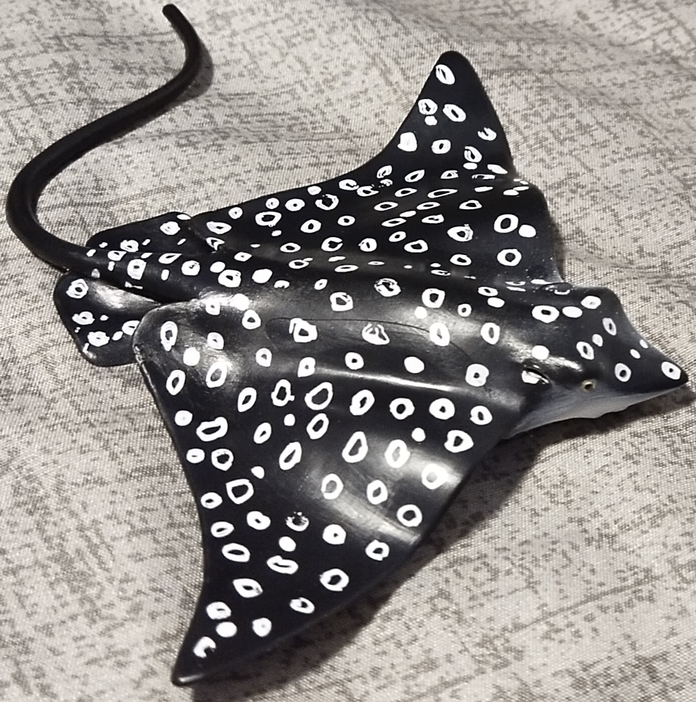
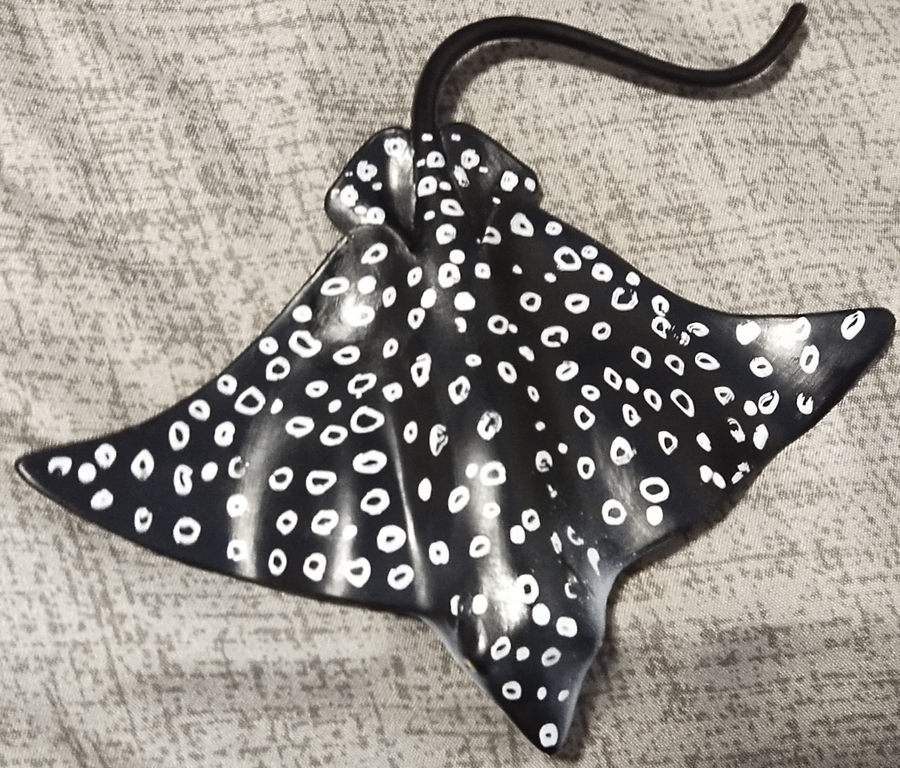
About the figure: judging by the ring like spots, I’m going to assume that this ray is A. ocellatus. This figure has a wingspan of about 14.5 cm when stretched out and 18 cm when the tail is stretched out, which puts this figure in the 1:10-1:20 scale for a mature female individual (which this figure represents due to the lack of claspers), although the tail is cut short as in many ray figures. The figure looks like it’s flapping its fins as seen here, with half on each fin at the top while the other half on the bottom, although in reality, eagle rays’ fins were stiffer and could not undulate in that manner, and they look to be a little too thin, even though the fins were not as thick as the body. Although to be fair, the mouth is open and it looks like it’s gulping in water or swallowing prey.
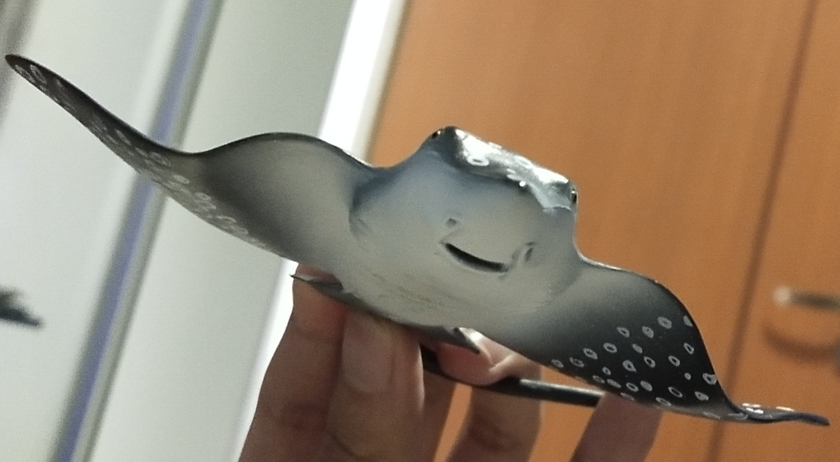
The figure is sculpted on a black plastic and part of the underside is painted white for the underbelly, although there looks to bed too much black as the pelvic fins are white on the actual animal. There are some spots on the underside at the tip of the wings, which is seen on the actual animal. The animal looks too thin in the body as if it is malnourished, although some individuals have the lower half to be thinner than the front, but the difference is too glaring in this figure. The white spots are nicely painted, although they could benefit with being a little smaller, and there seems to be no dorsal fin sculpted on this figure.
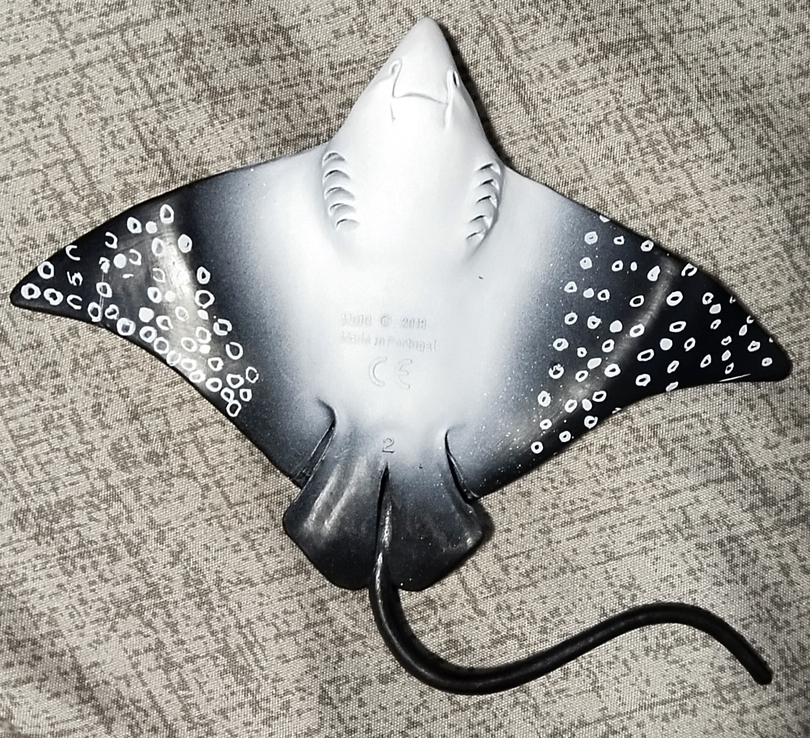
Moving to the head, the eyes are painted, albeit a little sloppily. There are the correct number of gill slits sculpted (5 pairs) and there are spiracle openings, too. The mouth and nostrils look relatively correct and the snout is somewhat pointy, although I wish they would have given it more of a duckbilled appearance, hence another common name, spotted duckbilled ray, as well as it looks like the ray is feeding too. I would like to also point out that my figure has a little more white on one side of its face and vice versa on the other, which is an odd paint choice.
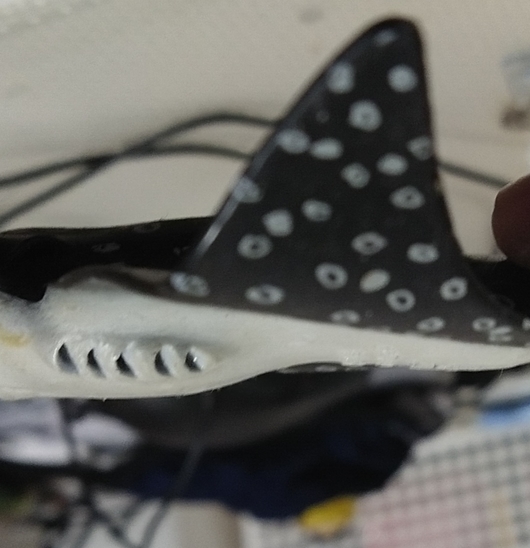
Overall, despite the several inaccuracies, I think this is a good, but not incredible, figure of perhaps the most popular ray outside the genus Mobulidae, and the only large one still in production. This figure was released in 2018, along with a manta ray. Safari Ltd. also has a sotted eagle ray but it has since been retired and I’ve never gotten around to obtaining it, although that figure has better proportions in wing thickness (the Mojo figure has better colors), and the sculpt lives on as a TOOB figure. Other companies like Kaiyodo, Colorata, and recently, Kitan Club, have made this figure, although they are small figures, which is unfitting as this species is probably the largest ray in terms of wingspan outside the family Mobulidae. Favorite Co. did make this species, although that figure is enormous. I hope companies like Papo or CollectA revisits this species in the next few years, and make a definitive version of this species; and after that, focus on the lesser known eagle ray species like the ornate eagle ray or the bat ray.
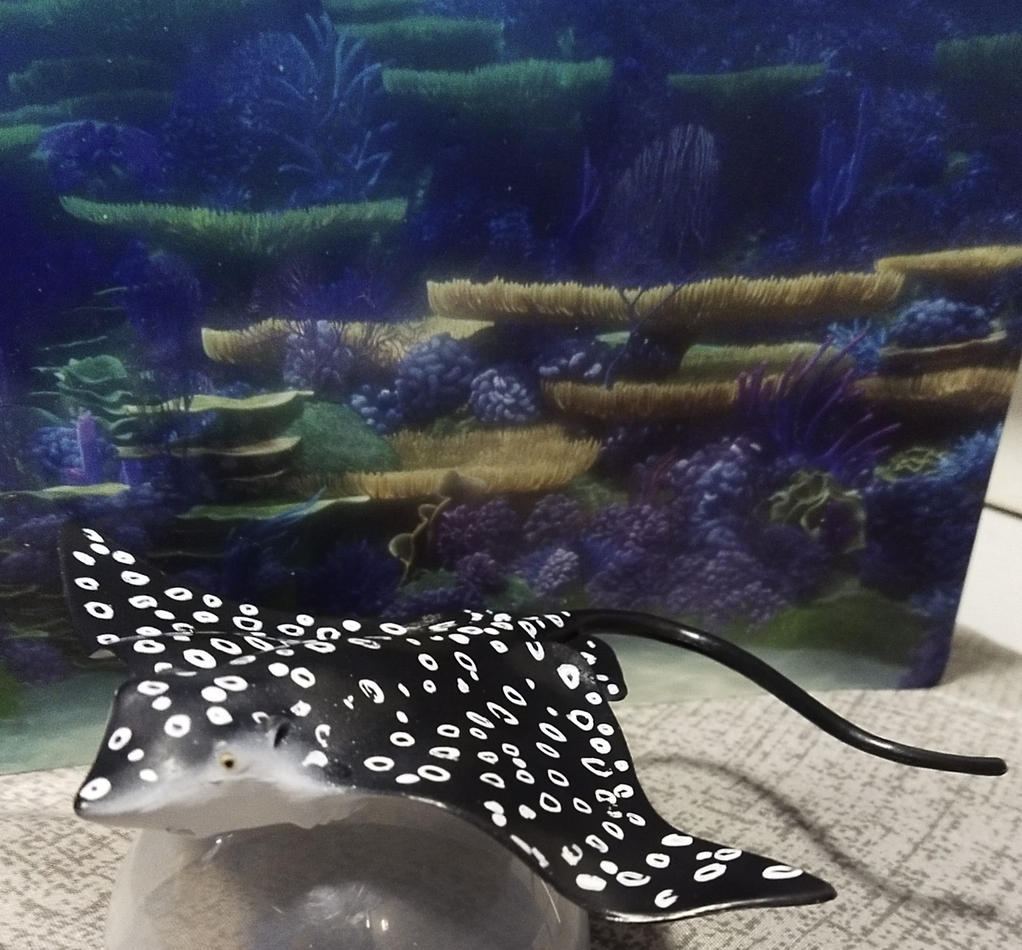
Compared here with the Safari Ltd. TOOB longheaded eagle ray (a generic eagle ray), Monterey Bay Aquarium manta ray, and Wild Safari Sea Life cownose ray:

Disclaimer: links to Ebay and Amazon on the AnimalToyBlog are affiliate links, so we make a small commission if you use them. Thanks for supporting us!



